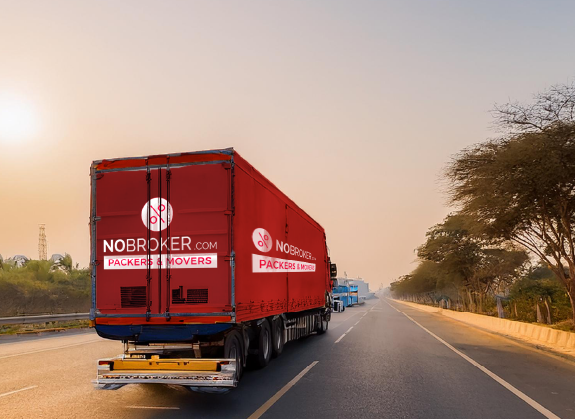Hi Buddy,
My grandfather was the owner of a Lal Dora land. Hence, I would like to provide you with certain insights into what is Lal Dora land? I have heard from him that, a red line was placed on maps dividing the village population from the nearby agricultural land, particularly in Delhi, to ease the keeping of revenue records under the British government in 1908.
Verify all the documents before buying and selling of property from the experts of NoBroker legal services. Visit the home page of NoBroker for buying and selling property. Sit back and get your sale agreement done by NoBrokerThe part of the village land that incorporates the village habitation, referred to as Abadi in this context, is known as Lal Dora land or Red Tape property. Traditionally, this property was utilised to maintain cattle and farm vegetables.
The government gave Lal Dora privileges to six villages in Delhi after the country gained independence in 1947. This area was intended to be used solely for agricultural purposes, and residents of the extended village Abadi would be exempt from construction bye-laws and home tax following independence.
The new outlying bounds were dubbed 'Phirni' as the population and communities grew. Extended Lal Dora areas were the lands between the earlier Lal Dora bounds and the 'Phirni.'
The Delhi Municipal Act exempts Lal Dora land from building bye-laws, construction requirements and regulations. Buildings on Lal Dora land were no longer required to be approved by anybody after a notification was issued by the Municipal Corporation of Delhi (MCD) in 1963.
Today, key parts of Delhi are still classed as Lal Dora properties, and commercial and high-end residential units are located there. Because these properties cannot be registered with a local government, the Delhi government offers a Lal Dora certificate as proof of ownership.
In Delhi, there are over 300 land-locked villages where property purchasers are flocking due to the accessibility of land with no municipal restrictions or property tax. Purchasing property on Lal Dora land has numerous advantages. Hence, after understanding what is the meaning of Lal Dora land, let us focus on the advantages.
The following are some of the benefits of owning a home on Lal Dora land:- Nominal property rates
In comparison to controlled regions in Delhi, Lal Dora houses are inexpensive, allowing residents to purchase homes in desirable locations. By avoiding the development of civic amenities such as parks and state-of-the-art roads, which are a mainstay of approved neighbourhoods, expenditures are reduced. Property transactions were traditionally conducted in cash; but, since demonetisation, this practise has been significantly reduced
- Lack of strict regulations
There is no need to obtain a building plan approved for construction because the Delhi Municipal Act exempts it from rules
- Location
These homes are located in places that have grown in popularity throughout time. The fact that these areas are Lal Dora territory adds to their allure. The majority of the Lal Dora land tracts are close to business districts and metro lines.
- Regulatory modifications
Plots larger than 1,500 square feet in this area have been redeveloped as multi-story flats under Delhi's Master Plan. The presence of high-rise structures and basic amenities will make this location more appealing to residents. Builders are entering into lucrative multi-story development agreements with landowners
- Exemption from real estate taxes
You would not have to pay any home tax if you bought a property here on a land that was smaller than 200 square metres
Disadvantages:- Has a higher chance of fraud (or duplicity of ownership)
Because land records of land ownership date back decades and centuries, these unregulated records with authority are not as trustworthy as the records of the regions that fall directly under the authority
- Inability to obtain bank loans for such properties
Because these areas have collective ownership rather than clear individual plot ownership, banks are hesitant to provide any type of loan for such properties. The majority of the occupants have no clear documentation of ownership
- Challenging to sell
These properties are difficult to resell due to the different risks associated with the Lal Dora districts
- Eviction
Due to the unregulated and unlawful nature of the premises, businesses in these areas are at risk of being evicted or perhaps having their properties demolished. Because unplanned development has resulted in the violation of numerous security norms and rules, many of these locations and structures have been designated as "hazardous" in terms of safety protocols. The government and courts have the power to order eviction or redevelopment of such structures, putting residents and businesses at risk
I conclude my answer here about what is Lal Dora land. Hope this helps:)
Read More:
What Are Documents Required To Buy A Property In Delhi Lal Dora Location? How To Identify Lal Dora Land?Your Feedback Matters! How was this Answer?
Shifting, House?
✔
Lowest Price Quote✔
Safe Relocation✔
Professional Labour✔
Timely Pickup & Delivery
Intercity Shifting-Upto 25% Off
Check Prices

Intracity Shifting-Upto 25% Off
Check Prices

City Tempo-Upto 50% Off
Book Now
Related Questions
Most Viewed Questions
Recently Published Questions
Authors Of The Question

0 Total Answers








What is Lal Dora Land?
Danish
1884 Views
1 Answers
2 Year
2022-05-09T17:46:51+00:00 2023-08-03T16:48:55+00:00Comment
Share